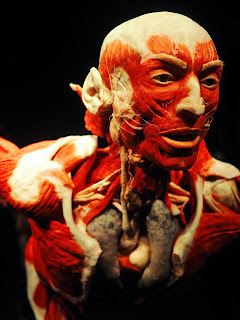Jamb/waec most repeated hot topics
OVERVIEW
1. Retina is the part of the eye that is sensitive to light.
2. Population rate or size varies due to factors like natality, mortality, immigration, and emigration
3.
The number of offspring produced from a mitotic division is Two.
4. Large
vacuoles are absent in animal cells but present in plant
cell along with Chloroplast and cellulose cell wall while Chromosomes occur in
both.
5.
The energy released during cellular respiration is stored in the form of Adenosine
Triphosphate (ATP)
6. At the end of mitosis, the number of
cells produced is four.
7.
During inspiration, the diaphragm contracts
and flattens out simultaneously as the rib muscles contract, causing the ribs
to be raised.
8. Each kidney is connected with the bladder by a Ureter.
9.
The structural similarities in Paramecium and Euglena are in the presence of
anterior and posterior ends.
10. The oxygen given off during photosynthesis is gotten from Water.
11.
The long necks and legs of the present day giraffes were some of the basis of
Lamarck’s Theory of Evolution.
12. The pancreas secretes insulin a hormone which controls excess sugar in the
blood.
13.
Anemometer is used for measuring wind speed.
14. Mitochondrion is the site for the production of ATP.
15.
Dry weight is the mass of the weight of an organism after all the water has
been removed. It is the most accurate measurement of organic masses and
weight.
16.
Amoeba moves with pseudopodia otherwise known as “false feet”.
17. Soil permeability refers to how easily water passes through the soil.
18.
The processes involved in water cycle are Evaporation, Condensation and
Precipitation.
19. Sahel savanna is in the drier regions to the north of the Sudan savanna, in
the north eastern part of Nigeria.
20. The earthworm possesses a hydrostatic skeleton.
21.
The factors that produce character in living organisms are Genes. Genes are
character producing in an organism.
22. Phytoplankton has the highest biomass in a food chain
23.
The hierarchy of organic evolution in plant: Schizophyta, thalophyta,
bryophyta, Pteridophyta and Spermatophyta.
24. Gestation is period of time which a zygote develop to the time of birth.
25.
Binary fission is a mode of reproduction which is common to both paramecium and
amoeba.
26. The pancreas secretes hormone which controls excess sugar in the blood.
27.
Plasmodium needs supporting cellular machinery to survive as it is not a
free-living organism.
28. In a food chain on land, green plant is the producer.
29.
Neurons that receive stimuli from receptors are called sensory neurones.
30. The cerebrum controls voluntary movement and interpretation.
31.
When a person moves from a dark room into a bright light, the pupils become
smaller
32. Water makes up about 77.5% of the living protoplasm in various living
things.
33.
Wildlife conservation is enhanced by discouraging elimination of endangered
species.
34. In humans, sex is determined by the difference in the nature of X and Y
chromosomes in the male.
35.
The structure of the ear which is responsible for balancing is the semicircular
canals.
36. Chorion is the outer layer that surrounds both the embryo and the yolk
sack.
37.
Which of these is not a type of fingerprint?
38. The opening and closing of the stomata is by Osmosis
39.
Hermaphrodite have both male and female reproductive organs.
40. Flooding and earthquakes are part of abiotic factors that control the human
population.
41.
Clay soil has the highest water-retaining capacity.
42. An organism that has been extensively used to test the chromosome theory of
heredity is Drosophila Melanogaster.
43.
The mitochondria is the reservoir for energy in the cell.
44. Inbreeding involves the crossing of individuals of the same species,
especially over many generations.
45.
The phloem tissues transport manufactured food from the leaves mainly to other
parts of the plant either for use or for storage.
46. Fossil records require the use of carbon dating to prove that evolution has
occurred.
47.
Melanin is the pigment that gives skin, hair and eyes their color. Melanin is
produced by cells called melanocytes.
48. Tissue is a group of cells that are similarly arranged together to perform
a specific function.
49.
The presence of four-chambered heart is a characteristic feature of mammals.
50. Morphological variation refers to the noticeable physical appearance of
individuals of the same species.


Comments
Post a Comment